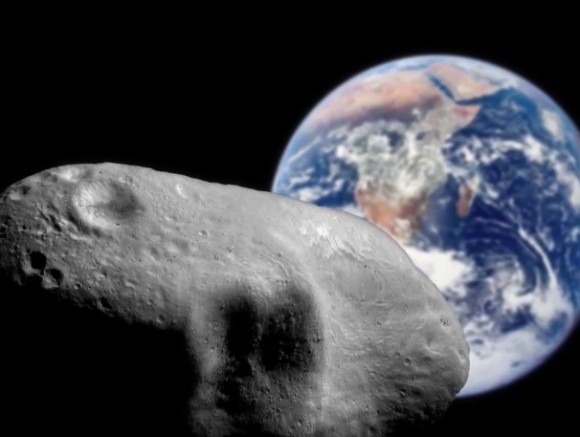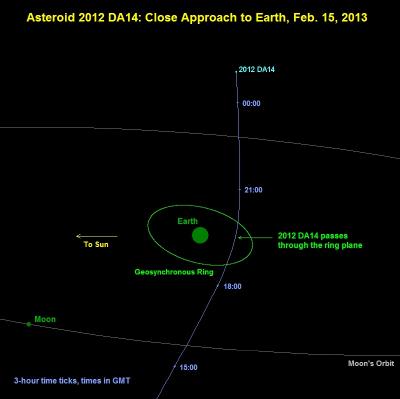Sent from my iPad
Begin forwarded message:
From: Kent Castle <kent.d.castle@hotmail.com>
Date: January 31, 2013 7:01:15 PM GMT-06:00
To: Choban Peter <peter.s.choban@aero.org>, Bogan Carole <bcbogan@earthlink.net>, Baird Darren <darren.t.baird@nasa.gov>, Hooi Robert <rwlh21@sbcglobal.net>, Heidel TQ <bheidel@highland.net>, Naftzger George <inntiqui@ffni.com>, Martin Bobby <bobbygmartin1938@gmail.com>, Lozano Marianne <kemahsabe@comcast.net>, Reason Marilou <loganlou55@yahoo.com>, Madsen Ron <ronstar@pdq.net>, Smith Harold <ke5gsk@gmail.com>, Kline Steve <steveandjeannekline@gmail.com>, Hart Harry <hwhart@embarqmail.com>
Subject: FW: In Two Weeks Asteroid 2012-DA14 will pass Earth closely
From: Subject: FW: In Two Weeks Asteroid 2012-DA14 will pass Earth closely
Date: Wed, 30 Jan 2013 23:02:07 -0600
In Two Weeks This 50-Meter Asteroid Will Buzz Our Planet
by Jason Major on January 30, 2013
Asteroid 2012-DA14 will pass Earth closely on Feb. 15, 2013 (NASA)On February 15 a chunk of rock about 50 meters wide will whiz by Earth at nearly 8 km/s, coming within 27,680 km of our planet's surface — closer than many weather and communications satellites.
For those of you more comfortable with imperial units, that's 165 feet wide traveling 17,800 mph coming within 17,200 miles. But regardless whether you prefer meters or miles, in astronomy that's what's called a close call.
Scientists stress that there's no danger of an impact by this incoming asteroid, designated 2012-DA14, but it's yet another reminder that in our neck of the Solar System we are definitely not alone.
http://www.youtube.com/watch?feature=player_embedded&v=GwidzVHvbGI
"2012-DA14 will definitely not hit Earth," says JPL's near-Earth object specialist Don Yeomans. "The orbit of the asteroid is known well enough to rule out an impact."
But with 2012-DA14′s upcoming February flyby Yeomans notes, "this is a record-setting close approach."
The rocky asteroid will come within about 4 Earth radii, which is well within the orbits of geosynchronous satellites. During its closest approach at 19:26 UTC it should be visible in the sky to amateur telescopes (but not the naked eye), becoming as bright as an 7th- or 8th-magnitude star.
Radar observatories will be watching 2012-DA14 during the days leading up to and following its approach in an attempt to better determine its size, shape and trajectory. NASA's Goldstone facility will have an eye — er, dish — on DA14, but it won't be visible to Arecibo. Stay tuned for more info!
Read more about 2012-DA14 on the JPL Near-Earth Object Program page here.
===============================================================



No comments:
Post a Comment